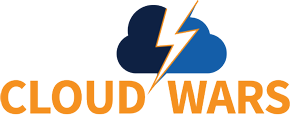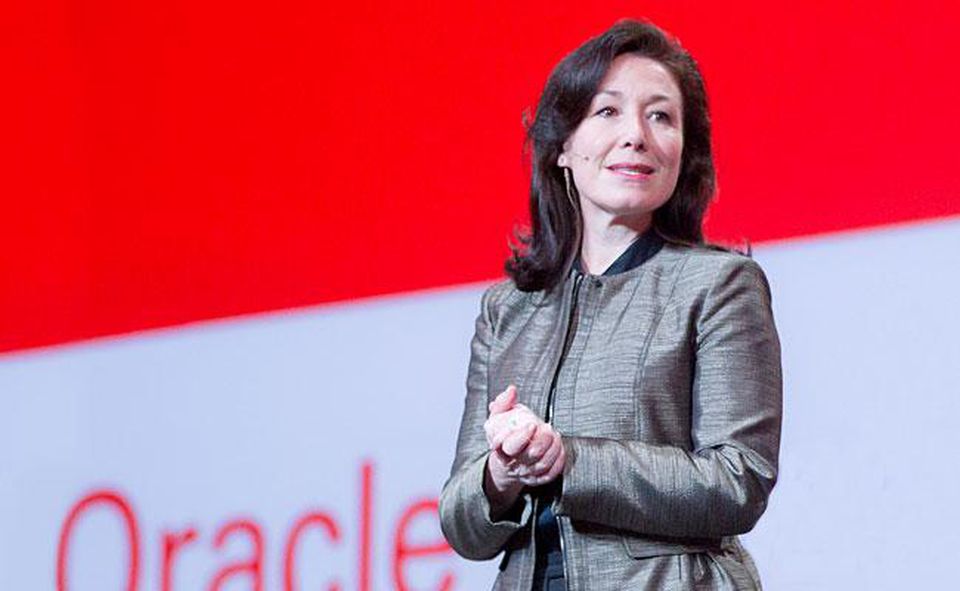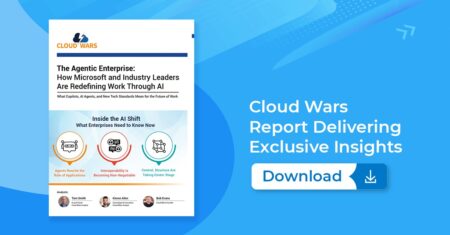As Oracle has become one of the most-compelling cloud stories of 2021 with its high-growth Fusion applications business being joined by the even faster-growing OCI infrastructure unit, it’s helpful to look at 10 predictions CEO Safra Catz has made about the cloud businesses over the past four months.
(On my weekly Cloud Wars Top 10 rankings, Oracle is #6. You can get my in-depth analysis of the company’s prospects in Confounding His Critics, Larry Ellison Turns Oracle into Cloud Powerhouse, which was part of our recent Cloud Wars Top 10 Special Report: Which Cloud Vendors Will Thrive in 2021?)
Catz, the brilliant operations leader who has served as the company’s sole CEO since the untimely passing of fellow CEO Mark Hurd in late 2019, has presided over a marked resurgence in Oracle’s cloud business on all fronts.
So in this latest installment of our current CEO Cloud Outlook 2021 series, I’ve pulled out 10 observations Catz has publicly made about the Oracle cloud business during the company’s two most-recent quarterly earnings calls. (Oracle declined multiple requests for an interview with Catz.)
You’ll see in these verbatim comments from Catz her bullish belief that Oracle’s best cloud days are still ahead of it for two reasons: first, Oracle’s released powerful new technologies and services all across its OCI line, which includes Autonomous Database; and second, many large Oracle customers that have been waiting for Oracle cloud technology to catch up with their sophisticated requirements are now convinced that it’s time to move to the cloud in a big way.
We’ll start with 3 comments Catz made during the Dec. 10, 2020 earnings call (for Oracle’s FY21 Q2), and then go to 7 comments Catz made during the Sept. 10, 2020 call (for Oracle’s FY21 Q1).
1. “Very high level of confidence”
I continue to have a very high level of confidence that our revenue growth will accelerate as our cloud business continues to become a much bigger portion of total revenue,” Catz said during the Q2 earnings call.
As supporting evidence for that rising confidence, Catz elsewhere during the call offered these perspectives on Oracle’s cloud business:
- “Over the last four years, we have doubled the percentage of revenue that is being derived from our cloud services. That is what’s driving our recurring revenue as a percentage of total revenue higher and higher, now reaching 73% of total company revenue.”
- “GAAP application subscription revenues were $2.9 billion, up 5%, with strategic back-office applications, up 26%, including Fusion ERP, which was up 33%; NetSuite ERP, up 20%; and Fusion HCM, up 24%. Also, retention rates for strategic back-office cloud applications, which are already high, continue to go even higher.”
- “Consumption revenue was up 64% for Autonomous Database and up 139% for OCI, our cloud Gen 2.”
2. Despite the pandemic, “our business is accelerating”
“Obviously, there was uncertainty before because of the pandemic. At this point, I think it’s very clear that our business is accelerating. Our stable businesses remain stable. And our shrinking businesses, whether it’s nonstrategic hardware or other things, those continue to get smaller,” Catz said on the Q2 call.
“But generally, the overall revenue number will be showing acceleration even in this pandemic, and I almost feel badly saying, maybe it helped ultimately because many of our customers have realized the importance of using technology to deal with their customers, their employees, their suppliers.”
3. Capital spending is soaring because cloud demand is booming
“We have upped our capital spending plans because the demand is so strong that we’ve increased it by probably this next quarter, it’ll probably be 50% higher than this last one just to keep everything going and growing,” Catz said on the Dec. 10 Q2 call.
“I also want to point out that some of our customers do not want to go into a big public data center but for different reasons—regulatory reasons or others—and want to have our [private cloud] Cloud@Customer, and that’s very important that we are able to offer that.
“And in addition, some of them have extremely a large requirement and are basically a private region. Those aren’t in the numbers you were mentioning as far as data center build-outs, but that’s another area where we are expanding and consumption is increasing at very, very large rate. So we’re very busy here just keeping up with demand.”
*These next 7 excerpts from Catz’s earnings call comments come from Oracle’s FY21 Q1 call on Sept. 10, 2020.*
4. Growing demand for Autonomous Database
“We’re seeing the success of Autonomous Database, which will continue to get even better now that we have Autonomous Database available on Cloud @ Customer,” Catz said on the Sept. 10 call.
5. “I’m not seeing into the future—I’m looking at what’s going on under the covers”
“What’s going on is very basically an extrapolation of what’s happening in the business,” Catz said in describing the broad-based cloud growth that’s pulling multiple complementary services along with it.
“So the things that are going very well and are growing and are getting larger and larger is everything associated with the cloud, and that does have implications on license because database options grew not only double digits but actually 20-something percent. And Analytics also grew because, as you know, with Oracle licenses, you can bring them to our cloud.
“But in addition, Exadata and some of our Oracle-specific hardware that’s very strategic still continues to do well. But really, the big barn-beaters are the fact that our SaaS business is large and growing quickly, and now, OCI and our database cloud products and services are growing and they’re getting larger and larger.
“And so, because we’ve got annual consumption revenue growing over 100%, and this now overwhelms the fact that some of our businesses—I’ll give you an example, on-premise consulting. This business continues to get smaller, and so it’s completely overwhelmed by the businesses that are growing faster.
“And customer commitment to our database is incredibly strong. More and more of our customers want to bring their Oracle databases to the Oracle Cloud.
“And then, of course, you have the cases that Larry talked about where our Oracle Cloud Infrastructure Gen2 is just so good and so much cheaper and so performant and secure that more and more applications want to come to that. So, that’s really what’s going on.
“I’m not seeing into the future—I’m basically looking at what’s going on under the covers, and it’s a very easy extrapolation as our installed base of our cloud businesses continue to grow.”
6. Many database customers waiting to migrate “crown jewels”
“So, first of all, you have to understand that our Fusion customers are also on OCI, which means that all of the applications that they want to build themselves, all the custom things that are on the Oracle Database, they’re going to be putting them on OCI also.
“In addition, just realize that many of our database customers stayed on-premise and waited for us to have OCI Gen2, which is powerful enough, secure enough and scalable enough for their crown jewels.
“And they’ve literally waited. And I know because I have visibility into sort of the future, because often they want to do what we call BYOL—bring your own license—they often need options. So I can see their intentions when they’re buying those options to bring those database workloads.
“Those are falling into the same categories that you’ve seen historically with us: the communications industry, the financial services industry, all of the industries that have very important high-performance applications that run on Oracle, they’ve been waiting to put them on OCI. And so we see that.
“Some of them are putting it into public cloud, but many of them, actually many more than I would have expected, are doing Cloud@Customer. This is our second-generation Cloud@Customer, now with Autonomous Database, and it is just so powerful for our customers.”
7. Big shift to cloud “is really quite clear”
Oracle allows customers to buy licenses—which is the traditional on-premises model—that include “options” for applying those funds toward cloud services rather than on-premises technology. So within Oracle, rising license revenue is seen as ultimately being an indicator for rising cloud revenue because many customers are buying those licenses with options and then applying the resulting credits toward Oracle cloud services.
Chairman Larry Ellison made that point during the Sept. 10 call and Catz elaborated upon it, so I’ll first share Ellison’s comment and then follow that with the extended explanation from Catz.
Ellison said, “So you cannot look at our growth and our database license business and say that’s the old—a revival of the old on-premise business. That is not correct. When we see ULAs [unlimited license agreements] and these big contracts for database, the reason people are buying more licenses, a lot of them—not all of them but a majority of them—are doing so because they have the flexibility of bringing those licenses to our public cloud or to Cloud@Customer and getting big discounts, getting a benefit, getting better prices by doing that. And a lot of people are doing this.
“So again, don’t translate ‘license’ to mean ‘not cloud’,” Ellison said. “A lot of the license is, in fact, cloud as well as on-premise.”
Catz then followed up with this elaboration that indicated again her conviction that she is able to gauge future cloud momentum based on the current buying behavior of customers.
“It’s driven by their plan to move to the cloud,” Catz said.
“And that is very, very clear because they’re buying the specific options—and as I said, the options number this quarter has a very high percentage growth—because it’s really in preparation for their move to the cloud.
“But I will also tell you that this is happening also in analytics and in some of the other technology licenses. So, analytics is very strong and the database option is extremely strong and both are very much pointing in the direction of moving to the cloud,” Catz said.
“So that’s really what’s driving [license growth]. It’s generally not going to be staying on-premise. Some, of course, stays on-premise and some will stay on-premise indefinitely, but many companies will be either hybrid or will be Cloud@Customer or, of course, in the public cloud.
“And that’s really what’s going on here, and it’s really quite clear.”
8. ‘Enormous backlog for Exadata—‘double what it was last year’
In the Q&A session of that Sept. 10 earnings call, one analyst asked what was behind the growth in Oracle’s hardware business, noting, “This is the first quarter we’ve seen without negative [hardware] growth in a long time.”
In reply, Catz said, “The hardware growth is entirely dominated by our strategic hardware products, which is really most focused around Exadata. Revenue in Exadata was up 15%; bookings in our strategic hardware, also up very, very high double digits. And we have actually an enormous Exadata backlog, really the largest—it’s actually more than double what it was last year.
“And the reality is that this segment is very, very strong. It has now gotten large enough that the issue for us in Q4, as I mentioned, was really around supply chain. And that’s taking a while to resolve itself, but we were able to make and ship a lot of Exadatas but we have an enormous backlog still behind that.
“And of course what that points to is a commitment by our customers to Oracle. You don’t buy an Exadata to run anything but Oracle database systems. And that commitment to the Oracle platform has really shown up in this area.”
9. Fusion ERP and HCM will continue to grow at a very healthy pace
“When you think of our application business, you really have to think about Fusion, and especially Fusion ERP, HCM, and NetSuite. Those are the fastest-growing segments,” Catz said.
“And you have to take into account that we have some other things in that business that are smaller, and some of them are from acquisitions—and that is the less-strategic part of our business. And as that gets smaller, it’s sometimes replaced by Fusion. That’s why that business is really doing very, very well because everything Fusion—ERP, HCM, this whole area is really growing quickly as you see many of our customers replace E-Business Suite, PeopleSoft, and JD Edwards.”
10. Among SAP on-premises ERP customers, ‘the door is open for us’
“We’ve also seen a new phenomenon which is that while historically it has been hard for us to push open the door of an SAP on-premise customer, now we find that many of those doors basically are already open for us,” Catz said.
“We’ve been replacing not only our own products among customers, but we’ve made a significant foothold in SAP customers simply because they’re really very frustrated with their — with the vendor that they have installed on-premise.”
I want to point out here that while Ellison has been making this same claim for more than a year about snatching SAP ERP customers, neither he nor Catz has ever identified a single SAP ERP customer that has switched over to Oracle Fusion ERP.
On top of that, SAP has vehemently denied that any such customer defections have taken place and has dismissed unconditionally the unverified claims that Ellison began making in December of 2019 and that Catz echoed in the Sept. 10, 2020 earnings call.
That unproven claim aside, Catz said the Oracle apps business is in great shape.
“So, this business for us is an enormous opportunity, and it’s really just chugging on all cylinders worldwide.”
RECOMMENDED READING
Inside World’s Hottest Cloud Vendor: a Chat with Google Cloud CEO Thomas Kurian
While Oracle, SAP and Salesforce Snub Co-CEO Model, Workday’s Loving It
Is SAP Ready to Drive the Digital Revolution? An Exclusive Chat with CEO Christian Klein
How Microsoft Plans to Stay #1 in Cloud: Exclusive Interview with Exec VP Scott Guthrie
Workday’s Aneel Bhusri Unplugged: Riffs on Employee Well-Being, UIs, and Rise of the Corporate Soul
Bill McDermott Exclusive Interview: ServiceNow Will Lap Legacy ‘Cement Makers’
Can Oracle Beat AWS and Snowflake in the Cloud Database Wars?
Inside Snowflake: the Phenomenal Growth Number Driving All the Hype
SAP, Google, Oracle Battle over Industry-Specific Solutions: 5 Predictions
Google Cloud Jumps to #3 on Cloud Wars Top 10; Trails only #1 Microsoft, #2 Amazon
The Top 10 Challenges for the Cloud Industry in 2021
Cloud Wars Top 10 Special Report: Which Cloud Vendors Will Thrive in 2021?
Disclosure: at the time of this writing, Oracle was among the many clients of Cloud Wars Media LLC and/or Evans Strategic Communications LLC.
Subscribe to the Cloud Wars Newsletter for in-depth analysis of the major cloud vendors from the perspective of business customers. It’s free, it’s exclusive and it’s great!








